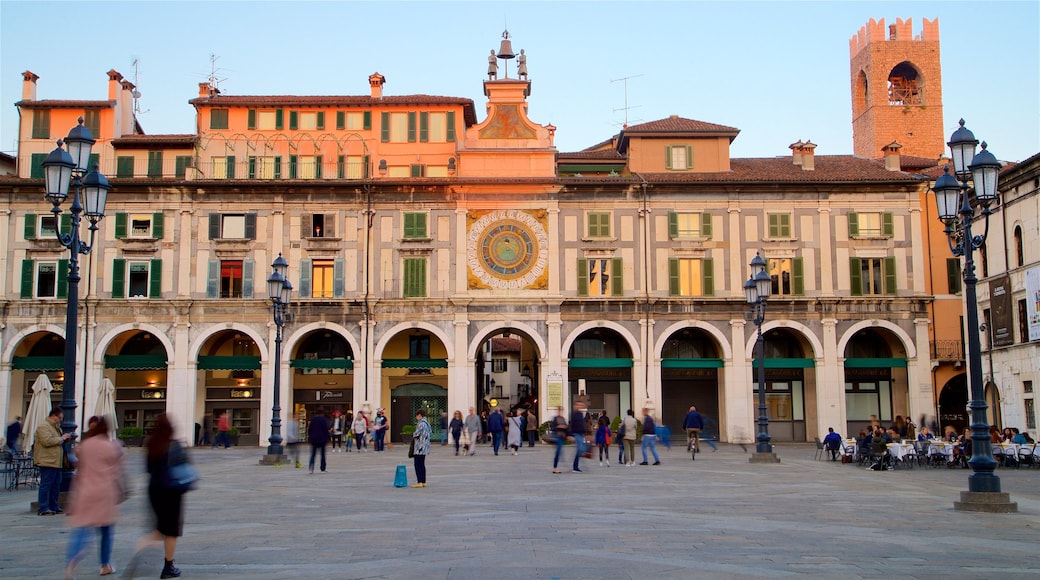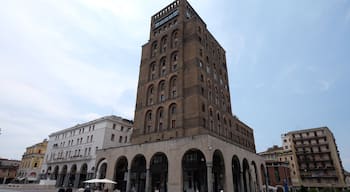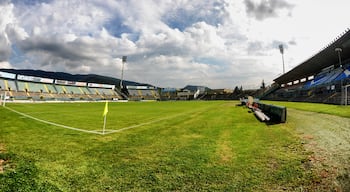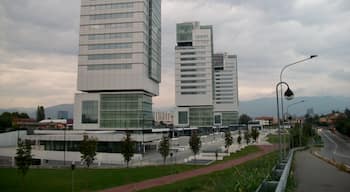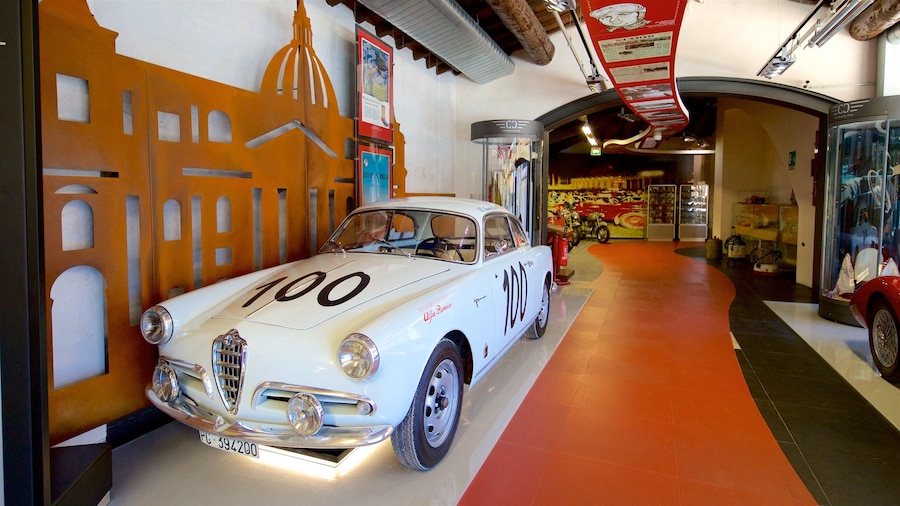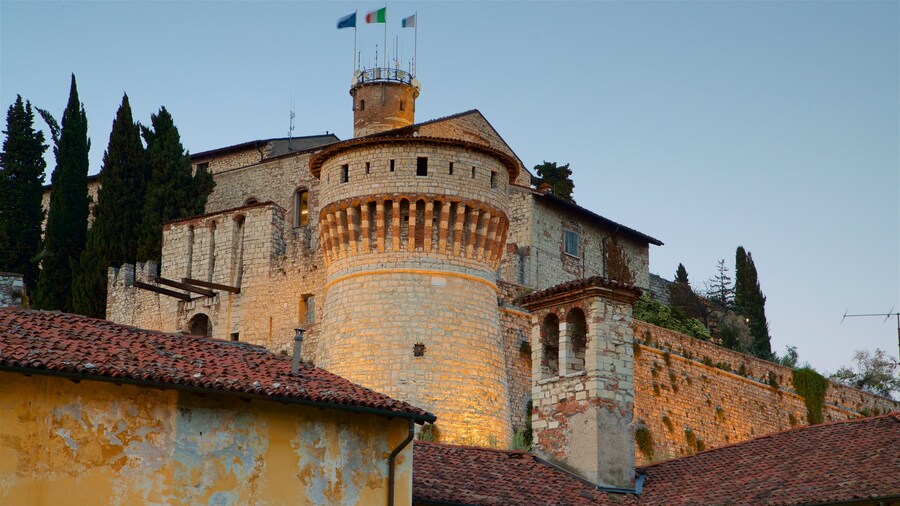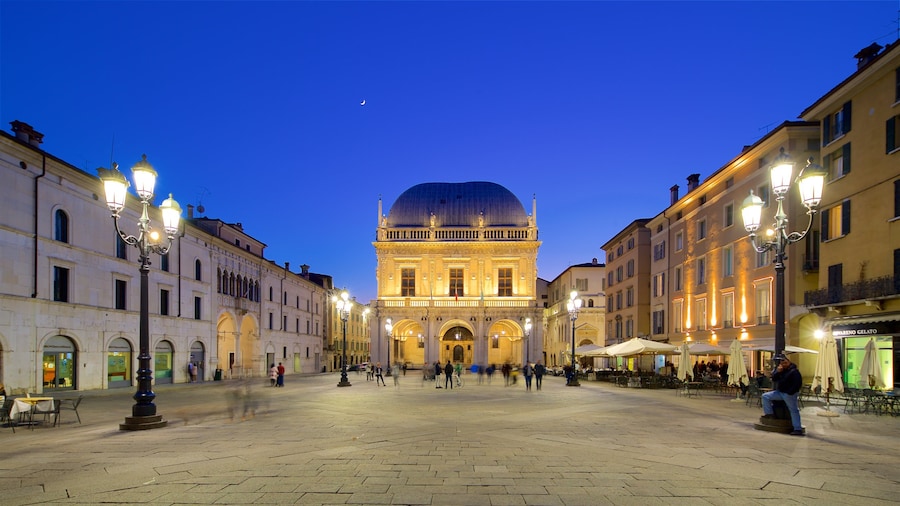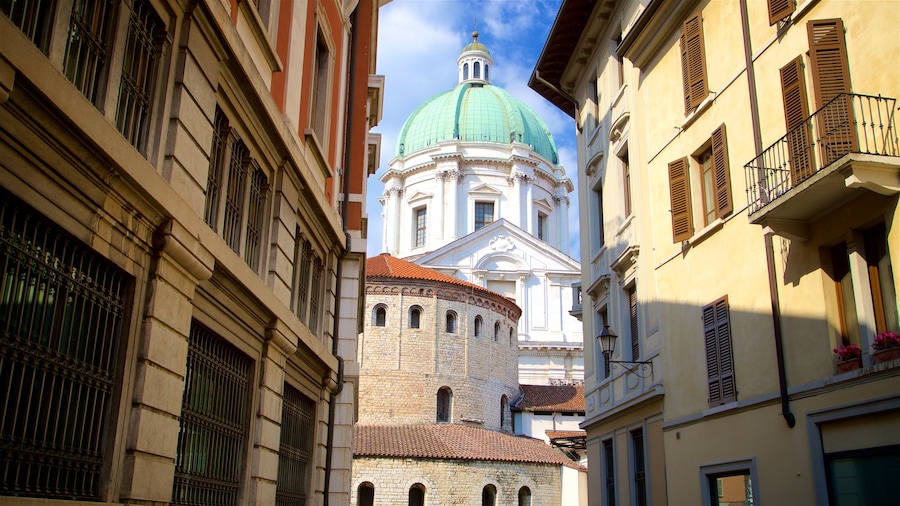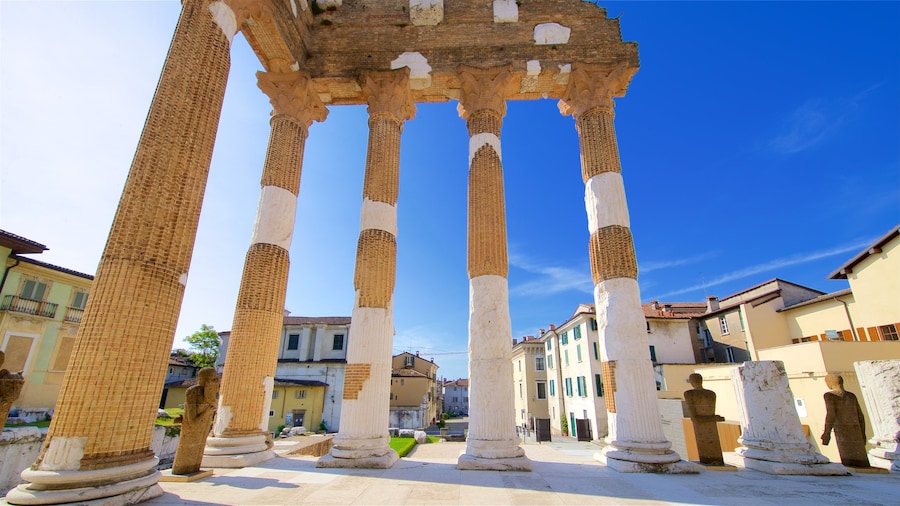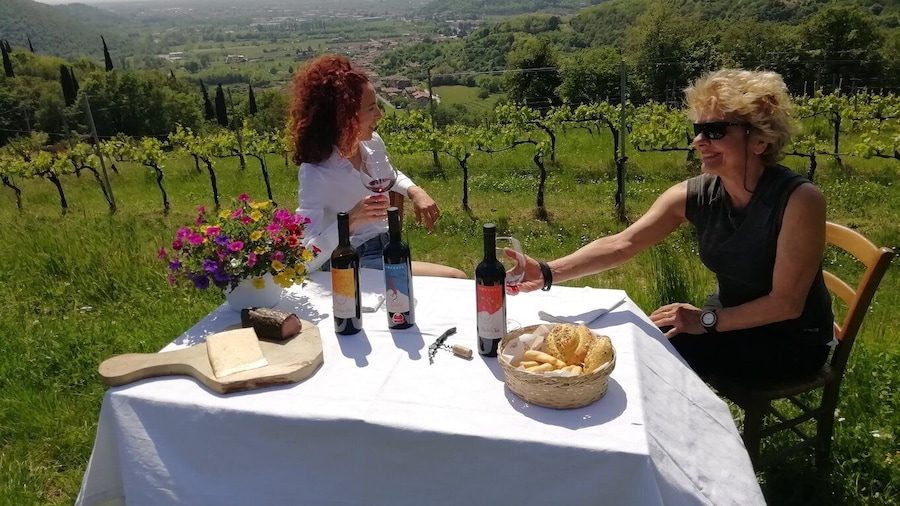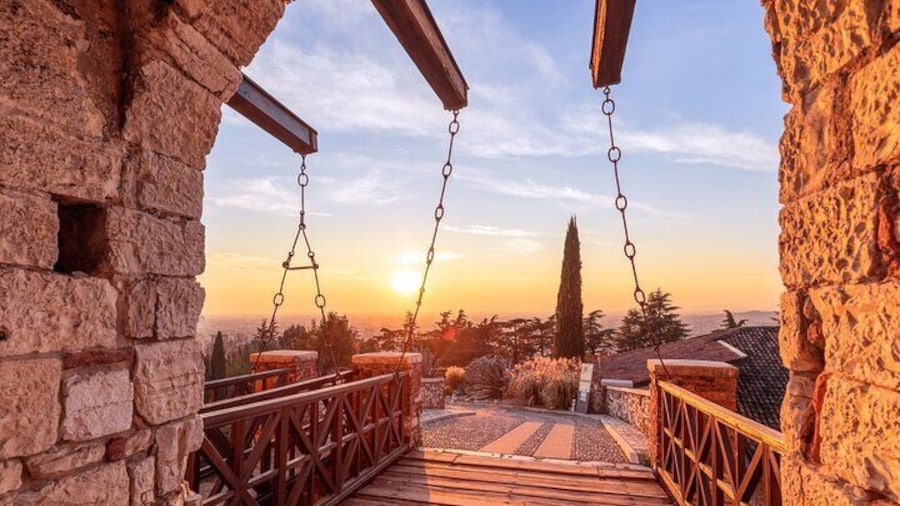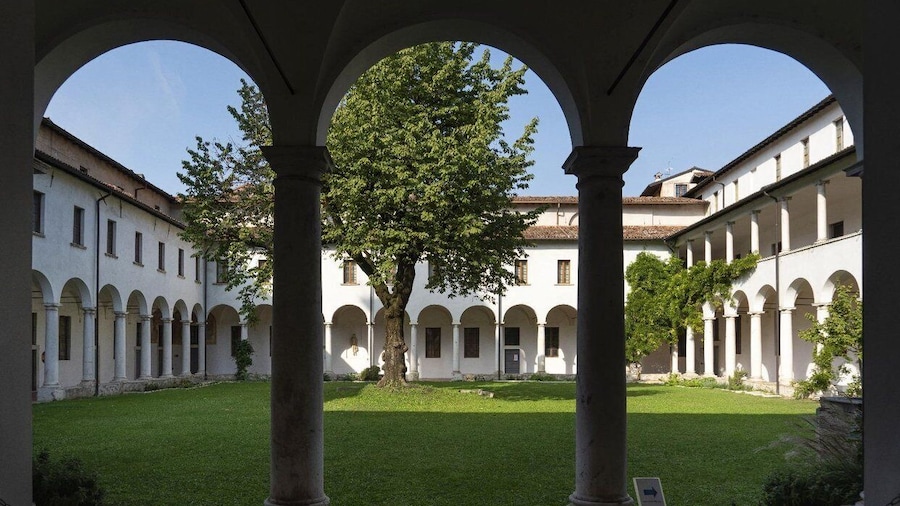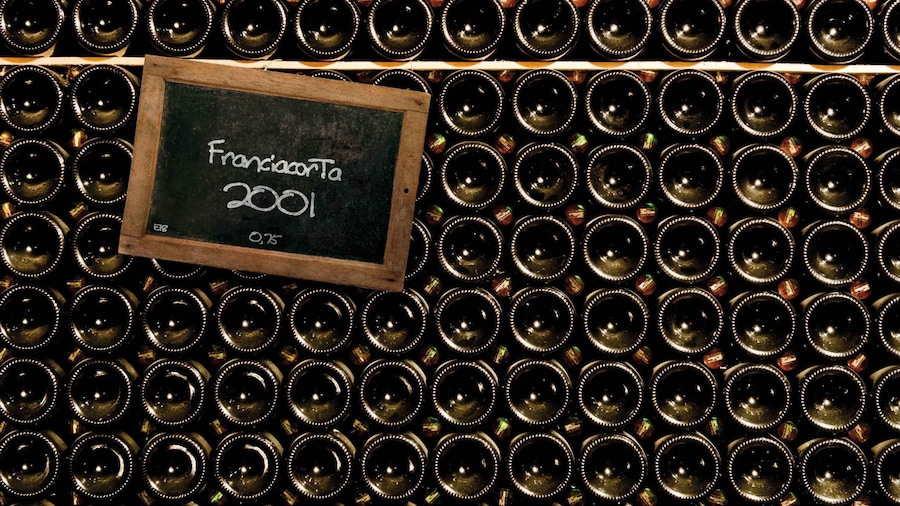A holiday in Brescia, halfway between Milan and Verona, is a splendid chance to discover this city located between the foothills of the Lombardy Pre-Alps and the Mella River. Originally a Roman outpost, Brixia was an active hub in the Imperial Age and it enjoyed renewed importance at the beginning of the nineteenth century when it was the site of the Risorgimento movement that culminated in the "Ten Days of Brescia". The city offers countless interesting places to visit, most of which are easily reached on foot, thanks to the city's architecture and urban plan: from the Broletto to the Loggia, from the Roman Forum to the medieval Castle and the artwork at the Pinacoteca gallery. Its proximity to Lake Garda gives Brescia a pleasant climate and a well-organised accommodation network. Our holiday offers to Brescia make it an affordable and enjoyable destination at the foot of the Lombardy Alps.
To discover Brescia's history, let's begin from the Piazza della Loggia, the centre of city life. This wide open space is home to important Renaissance monuments like La Loggia and the Palazzo Pubblico, today the Municipal headquarters, with its distinctive lead cupola. Opposite, you can admire the beautiful Clock Tower with a valuable astronomical clock at the top along with the "macc de le ure" (The Madmen of the Hours), as the Brescians say in reference to the two bronze figures who toll the bells. On the southern side of the square stand the Monti di Pietà (pawnshops), two buildings connected by an arch. Their façades contain Roman era marble and stone. Passing under the porticoes, common in many Brescian streets, you'll reach the Bruciata Tower at the north-eastern side of the Piazza della Loggia, next to the Church of San Faustino in Riposo. Passing through the Porta Bruciata, you'll leave behind the Piazza della Loggia and will find yourself on a small square with wonderful traditional restaurants.
From Via Beccaria, you'll reach the Piazza Paolo VI, home to the city's two iconic churches: the Duomo Nuovo and the Duomo Vecchio, also called the Rotonda. The Duomo Nuovo is late Baroque, while the Rotonda is Romanesque. It was built on the ruins of an early-Christian basilica and has a circular floor plan, the inspiration for its nickname. Also on Piazza Paolo VI, in front of the two churches, you'll see two symmetrically placed fountains embellishing the square. To the right, on the north side, you'll see the Broletto, a quadrangular building vaunting the beautiful Pégol Tower, once the headquarters of the ancient city, today housing public offices.
Following the narrow street that flanks the Broletto, you'll find yourself on Via Musei, the ancient Roman decumanus. Here you'll leave behind the medieval quarter to discover Roman Brescia, which stood where you can now admire the ruins of the Roman Forum. Various noble residences look on to this street, including the Palazzo Maggi and the Palazzo Martinengo Cesaresco Novarino, now exhibition centres. The Forum includes the ruins of the Capitolino Temple, commissioned by Emperor Vespasian, and the nearby ruins of the Roman Theatre. Higher up, towards Via Pietramarta, behind the theatre, you'll see the Church of S. Corpo di Cristo, which was once part of a fifteenth century convent. If you've a mind to have a quick break, then head to the Piazzale Arnaldo close by, where you can enjoy a view of the Ronchi quarter, and where you'll find one of the most famous bakeries in the city, Zilioli, at the corner with Viale Venezia. In autumn, you can try bossola, a typical sweet prepared following the ancient recipe.
Your tour of Brescia can start up again from the third of the city's main squares, the Piazza della Vittoria, which was built during the Fascist period atop the ruins of an ancient borough. Every second Sunday of the month there's a traditional antiques market full of great finds. A stone's throw away is the monumental Palazzo Martinengo Palatini, today home of the university rectorate.
Moving onto Corso Palestro, one of Brescia's pedestrian shopping shopping streets, full of elegant boutiques, you'll reach Via S. Francesco d'Assisi, where the Church of S. Francesco d'Assisi stands, one of the city's most beautiful monuments thanks to its frescoes and its fourteenth century cloister. Exiting the cloister, you can reach the finely inlaid marble façade of the Church of S.Maria dei Miracoli, and the nearby Church of SS. Nazaro e Celso. At this point you can take a little break. Enjoy happy hour or have a quick bite at the Mentelocale, with its lovely open-air terrace.
If you are in search of Brescia's art history, the Pinacoteca Tosio Martinengo gallery holds some of the city's most important pieces. Highlights include the “Pala della Mercanzia” by Vincenzo Foppa and paintings by Raffaello and Alessandro Bonvicino (il Moretto). The recent staging of the collections spotlights Brescian art from the fourteenth to the eighteenth centuries. The pieces on display include Brescian Renaissance masters, works by Raphael, Paolo Veneziano, Antonio Solario and many more.
Brescia also has a lot to offer in terms of night-life. For a dinner of local specialities in the heart of historic Brescia, you can dine at Locanda dei Guasconi, halfway between the Piazza della Loggia and the Piazza del Duomo. You can round off your evening at the Santa Chiara Theatre, enjoying a performance in this de-consecrated church turned theatre. A great place to try some traditional Brescian delicacies, such as the famous casoncelli, is the Labirinto on Via Corsica, once a resting place for weary travellers. In the milder seasons, you can stroll through the centre, following Via S. Faustino, which is full of bars open late, down to the Church of Santi Protettori. Take advantage of one of our last minute holiday offers to Brescia and enjoy a welcoming atmosphere and a pleasant stay near the Lombardy Alps and the surrounding countryside.



